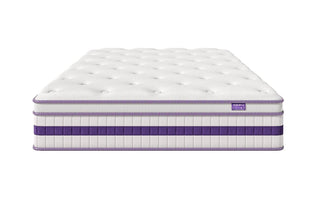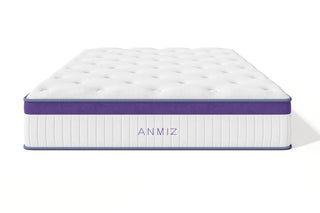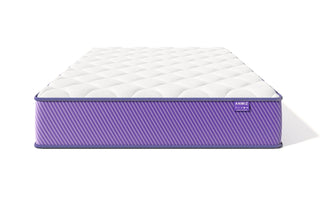Mattress Cooling Testing
We occasionally receive free products for testing and take part in affiliate programs, which means we may earn a commission if you purchase items through links on our site. For full details, please refer to our disclosure page.
If you’ve ever woken up drenched in sweat or struggled to fall asleep on a hot night, you already know how much temperature affects sleep quality. Sleeping too warm can interrupt deep sleep cycles and leave you tossing and turning.
That’s why at Dweva Mattress, we carefully test each mattress’s cooling and temperature control. Whether you’re a naturally hot sleeper or sharing the bed with a partner who radiates heat, the right cooling mattress can make all the difference.

Why Cooling Matters
Your body’s core temperature naturally drops a few hours before bedtime—this drop signals to your body that it’s time to sleep. In the morning, your body temperature gradually rises again to help you wake up.
However, this delicate temperature rhythm can be disrupted by:
- Warm room temperatures or heavy bedding
- Sleeping next to a warm partner
- Dense, heat-trapping mattress materials
Even small differences in heat retention can lead to sweaty nights and restless sleep. The ideal sleep temperature for most adults is between 60°F and 67°F. If your mattress doesn’t allow airflow or traps heat, it can interfere with your body’s ability to regulate temperature naturally.
How We Test Mattresses for Cooling
We use a three-step testing process to evaluate how well each mattress resists heat buildup and promotes airflow. Because cooling is somewhat subjective, we include multiple testers with different body types to ensure balanced feedback.
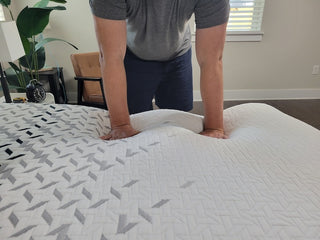
1. Cover Assessment
We start by examining the mattress cover. A thin, breathable, or cool-to-the-touch fabric is a good indicator that the mattress will promote airflow and help prevent overheating. Materials like phase change fabric and Tencel often score high here.
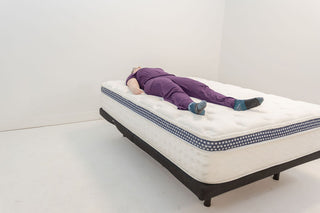
2. Rest Test
Next, testers lie on the mattress for seven minutes, noting how warm or cool they feel and identifying any heat buildup or airflow zones.
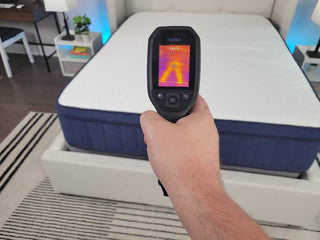
3. Temperature Readings
Finally, we use a thermal temperature gun to record the bed’s surface temperature before and after the rest test.
- A temperature increase of less than 8°F indicates excellent cooling.
- Beds that stay within this range earn a cooling score of 4 or 5 out of 5.
All three results are averaged for a final cooling score, giving a reliable view of how cool the mattress sleeps under real-world conditions.
Which Mattress Types Sleep the Coolest?
Memory Foam Mattresses
Memory foam mattresses excel in comfort and pressure relief, but traditional foam tends to trap heat. To counter this, many brands use gel-infused, copper-infused, or graphite-infused foams that pull heat away from the body.
Some also use phase change covers, which feel instantly cool to the touch and maintain a consistent temperature throughout the night.
Latex Hybrid Mattresses
Latex hybrids are some of the most naturally cool mattresses available. The latex foam comfort layer stays breathable and temperature-neutral, while the coil support base enhances airflow. Latex also comes from natural sources, making it ideal for eco-conscious shoppers.
Hybrid Mattresses
Hybrid mattresses combine foam comfort layers with coil systems underneath. The coils provide ventilation channels, allowing body heat to escape more efficiently than in all-foam designs. Look for hybrids with gel-infused comfort layers or cooling covers if you’re prone to overheating.
Innerspring Mattresses
Innerspring mattresses are some of the coolest options because their coil cores promote strong airflow and resist heat buildup. They’re ideal for hot sleepers who prefer a firmer, more traditional feel and are especially comfortable for back and stomach sleepers.
Best Cooling Materials to Look For
Modern mattress manufacturers understand that temperature regulation is key to a restful night’s sleep. That’s why many beds today feature advanced cooling technologies designed to keep you comfortable from dusk till dawn.
Some of these cooling materials rely on cutting-edge science, using engineered fabrics and gel infusions to draw heat away from your body. Others take a more natural approach, using breathable, moisture-wicking materials sourced from mother nature to help you stay cool naturally.
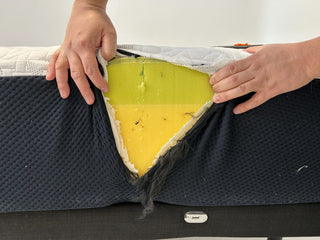
Gel-Infused Memory Foam
Gel microbeads within the foam absorb and disperse heat, preventing excessive warmth. Some foams even use phase-change gel for extra cooling power.
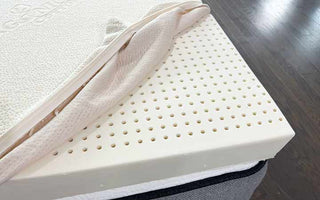
Latex
A naturally breathable material, latex allows air to flow freely and doesn’t trap heat the way dense foams can. It’s a durable, sustainable, and cool choice for sleepers who prefer a responsive surface.
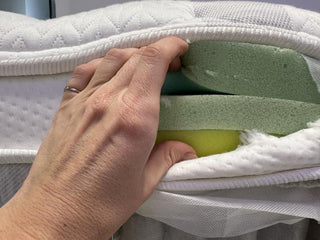
Copper-Infused Foam
Copper conducts heat away from the body and has antimicrobial properties, helping the bed stay cooler and cleaner.
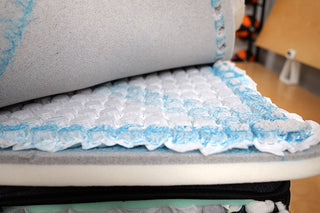
Ventilated Memory Foam
This foam features strategic air channels that improve airflow and prevent hot spots. It’s an excellent upgrade over traditional memory foam.
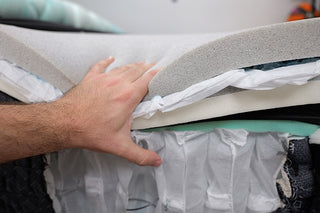
Pocketed Coils
Individually wrapped coils enhance breathability and air circulation, while also reducing motion transfer for couples.
Phase Change Material (PCM)
PCMs actively absorb and release body heat, maintaining a stable sleeping temperature. They feel cool to the touch and help balance temperature fluctuations throughout the night.
Whether through high-tech design or eco-friendly innovation, these materials work together to maintain an ideal sleeping temperature, ensuring you stay cool, dry, and comfortable throughout the night.
FAQs
In short, if you’re tired of overheating at night, investing in a cooling mattress designed for airflow, temperature regulation, and moisture control can transform your sleep quality—and help you wake up refreshed instead of restless.



